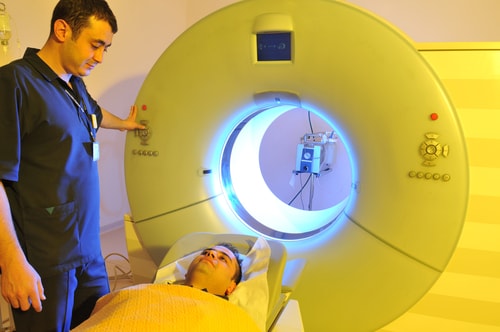Study finds that proclivity for lung cancer survivors to undergo PET scans is detrimental
Orange County, CA - June 21st 2016 - According to a study published in the Journal of the National Cancer Institute, PET scans were used as a primary imaging procedure for long-term monitoring of cancer survivors, a finding with significant implications. The study also found that absorbing the increased risks associated with PET imaging made no difference, as undergoing this particular exam did not result in improved prognoses.
To conduct the study, researchers from the University of Michigan Medical School and Dartmouth-Hitchcock studied Medicare data for over 100,000 lung and esophageal cancer patients, who were inflicted with cancer in the mid-2000s and received follow-up care until 2011.
According to national guidelines, PET scans should only be ordered following findings from imaging options that are lower in cost. On average, these scans cost seven thousand dollars, making it the most expensive exam currently available. The researchers found that 22 percent and 31 percent of lung and esophageal cancer patients, respectively, had at least one PET scan to monitor for cancerous growth during their follow-up period, before undergoing any other kind of imaging procedure.

Interestingly enough, researchers found extreme irregularity among hospitals in how they order PET scans. Some utilized this imaging technique eight times more than others. Regardless of a patient’s PET scan frequency, the likelihood of a two year survival rate remained unchanged, revealing no true benefit to undergoing the procedure, other than increased profits for the hospitals ordering scans.
According to Mark Healy, MD, a surgical resident and research fellow at the U-M department of surgery and member of the Center for Health Outcomes & Policy, this research sheds light not only on PET scan use, but shortfalls in how Medicare regulates health. Currently, the federal program imposes a three PET scan limit per person, but the research indicates that thousands of patients only receive one or two.
“If the intention of the policy is to curb overuse, this doesn't seem to be a very effective method, and the agency should reevaluate how it structures its limits," Healy said.
To ensure that PET scans are used correctly, patients must experience particular symptoms or unexplained changes in health such as nausea, yellowing of the skin, or unexplained weight loss. Undergoing this type of imaging procedure does not usually help prolong prognoses, but instead leads to anxiety, wrong diagnoses, false alarms, unnecessary radiation exposure, and more costs.
Not only are these exams expensive, but the radiation exposure can retroactively cause cancerous growth as well. To learn more about when to undergo a PET scan after cancer treatment, look to this guideline from Choosing Wisely.
Contact Ampronix:

Email: info@ampronix.com
International Sales: +1 949-273-8000
Domestic Sales: 1800-400-7972 for US and Canada
Follow Us:
Share This Article:
View our Product Catalog Online Here
About Ampronix
Ampronix is a renowned authorized master distributor of the medical industry's top brands as well as a world-class manufacturer of innovative technology. Since 1982, Ampronix has been dedicated to meeting the growing needs of the medical community with its extensive product knowledge, outstanding service, and state-of-the-art repair facility. Ampronix prides itself on its ability to offer tailored, one-stop solutions at a faster and more cost-effective rate than other manufacturers. Ampronix is an ISO & ANSI/ESD certified facility. To learn more go here.
Study finds that proclivity for lung cancer survivors to undergo PET scans is detrimental Orange County, CA – June 21st 2016 – According to a study published in the Journal of the National Cancer Institute, PET scans were used as a primary imaging procedure for long-term monitoring of cancer survivors, a finding with significant implications. The study […]



